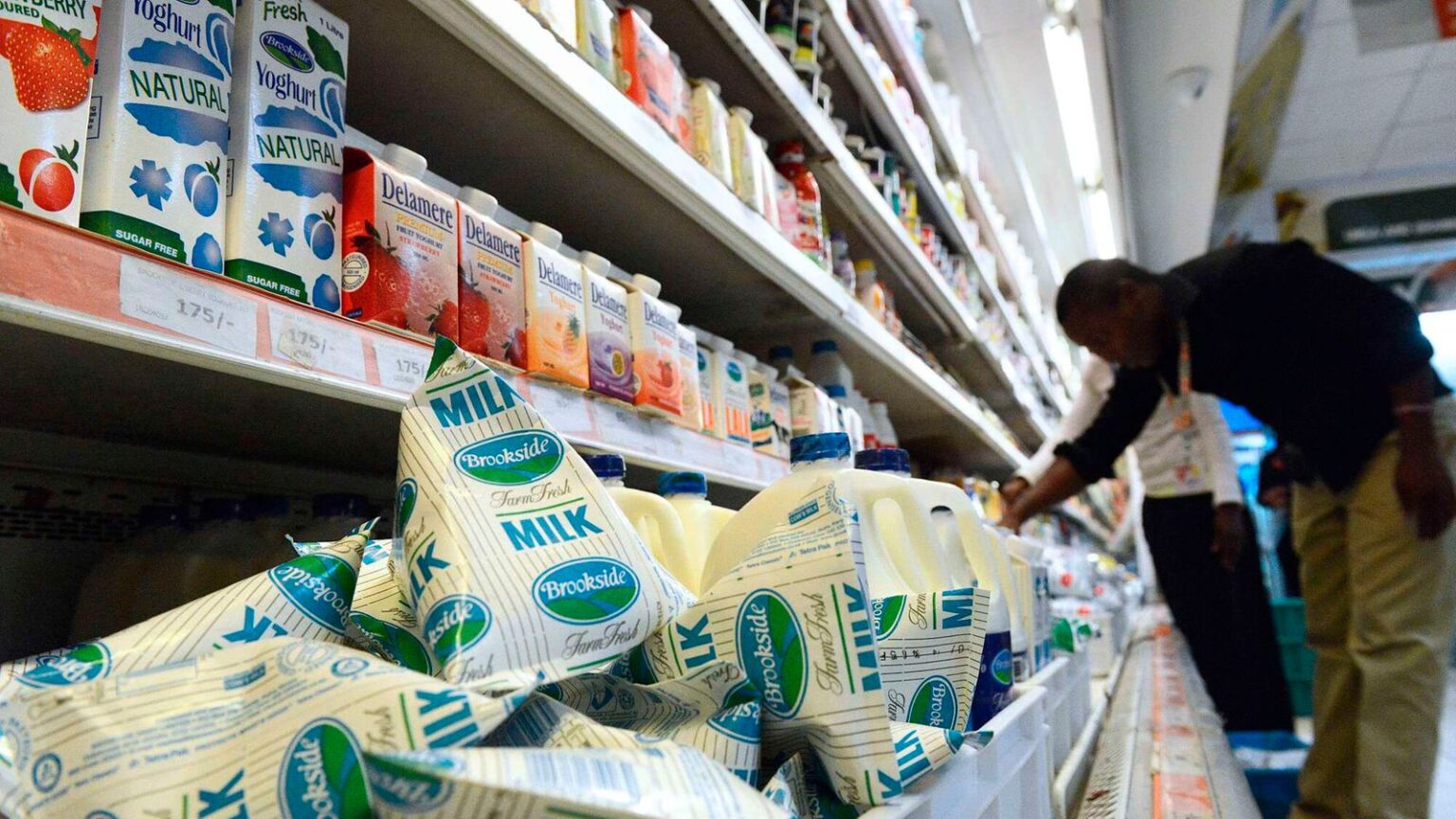- Milk processor Brookside Dairy Uganda was forced to let go of 200 workers to maintain its financial stability for 2023.
- The East Africa Dairy Development strategy is a reform set to transform the lives of farming families with improved market access.
- By 2013 over 82 farmer-owned dairy enterprises prospered and reflected $8.3 million in equity investments.
On June 23rd, Brookside Dairy Uganda laid off at least 200 workers citing intensifying Kenya-Uganda milk trade war that has seen Nairobi block dairy products imports from Kampala.
Brookside Dairy Uganda has said that the Kenya-Uganda milk trade, a key income stream, was suffering significant damage. While the extent is still unclear, its effects are starting to get clear by the day.
Kenya-Uganda milk trade war a risk to dairy sector
Kenya is Uganda’s largest export market within the region, and both are part of the East Africa Dairy Development initiative. This strategy aims at ensuring that East Africa’s DAiry sector remains stable and improves between three key regions; Tanzania, Uganda and Kenya.
Within the past few months, Africa’s economic growth has taken a turn for the worst due to several reasons. Like Dominos falling over, African economies are suffering financial constraints that have significantly damaged vital economic activities. Among its affected sectors is its dairy industry which accounts for at least 51 million tonnes of the globe’s milk production.
Unfortunately, Kenya has silently stopped milk exports from Uganda saying Kampala cannot meet the desired quarter of milk production for local and exports market. Furthermore, despite the sealed agreement of the EADD, Kenya did not hide its intention of ending the Uganda-Kenya milk trade.
Kenya has silently tried to implement the new reform after it became apparent that the pressure on Uganda’s small-scale farmers was too much. In addition, farmers in Kenya have been calling for protection from cheap milk imports to safeguard their profit margin.
In the FY2023/24, President William Ruto, took a radical step on the matter by introducing 16 per cent levy on all milk imports.
Uganda lacks milk export capacity
The government implemented this levy after visiting Uganda to asses its milk production rate. Unfortunately, after showcasing how Uganda’s milk sector sorely lacked the means and capacity to export large quantities of milk, the die was cast for Kampala.
Uganda’s is not taking the measure lightly, as the brazen move directly threatened vital economic activity for the region. Initially, the former governments of Kenya rejected this law indicating it could only apply to milk imports outside the East African Community.
Uganda’s milk sector has been a heated subject within the market. Truck-loads of its milk have been returned or seized at the border due to a myriad of quality and legal issues. This has significantly damaged its milk trade, a scenario the EADD has tried to prevent. According to the Uganda Revenue Authority, over 30 trucks of milk were returned or diverted their course before authorities in Kenya seized them.
In June, Uganda’s Trade Minister Amelia Kyambadde and State Minister for Foreign Affairs Okello Oryem protested to the Kenya High Commission in Kampala.
Further, Uganda is threatening to establish several reforms to block certain Kenyan goods from entering Uganda. The actions of both regions have significantly set aside the reforms of EADD, and now a milk trade war is boiling over.
Also Read: Poisoned Cream: How Kenya’s adulterated milk has ruined an industry
EADD falls apart due to Uganda-Kenya milk trade war
The East Africa Dairy Development strategy is a reform set to transform the lives of farming families with improved market access. The Heifer International, International Livestock Research Institute, World Agroforestry Center and African Breeder Services founded the strategy in 2008. They initially designed the initiative to facilitate improved dairy production, business practices and market access.
Forming competitive dairy business hubs, and knowledge sharing between select regions would implement this vision. According to Heifer International, the East Africa Dairy Development initiative is found in three vital EA countries; Kenya, Uganda and Tanzania.
All three have played a crucial role in sustaining the Dairy production rate in Africa. However, it still experienced significant drawbacks due to several issues. To mitigate this steady lag, the EADD implemented several initiatives to improve the milk trade regimes between all three countries.
The first phase of the EADD began in 2008 with the intent of doubling dairy-derived income among farmers. Their plan targeted at least 179,000 dairy farms within East Africa living on small 1-5 acre plots. This phase also included improving cross-bred cow ownership and increasing the milk production rate.
By 2013 over 82 farmer-owned dairy enterprises prospered and reflected $8.3 million in equity investments by more than 200,00 smallholder farmers in all three countries. Overall EADD-supported businesses have earned over $131 million in revenue since its founding.
Also Read: Women’s critical role in meeting Africa’s animal products demand
Opportunity for farmers
Its new approach to East Africa’s milk trade has opened new doors of opportunity for farmers. Today farmers earn over $113 million from milk deliveries.
The East Africa Dairy Development strategy has also implemented several financial services for small-scale farmers. This allows farmers to access commercial bank services such as credit or commercial loans. Initially, East Africa’s milk sector experienced difficulty in acquiring any loans due to its unpredictable nature. The establishment of the EADD solidified its reputation reassuring most banks.
Unfortunately, given the sour demeanour between Uganda and Kenya’s milk sector, the efforts of EADD may be in vain. Because of the new economic reforms in Kenya, Uganda’s low milk production threatens its primary objectives. In addition, Uganda’s milk sector lacks the means of increasing its production rate. Despite this, it still heavily relies on Kenya to facilitate its milk exports. With both sides threatening to end their milk trade war, the after-effects may spill over Tanzania.
Uganda’s milk sector faces trying times, and its overreliance on Kneya may be its downfall.
